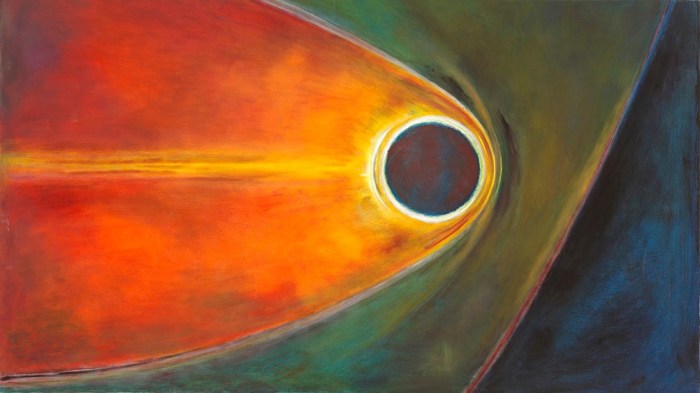
Sky Event, 1969
oil on canvas
42 x 75 inches; 106.7 x 190.5 centimeters
LSFA# 10665
Frederick Wight was born on June 1, 1902, in New York, New York, and grew up in Cape Cod, Massachusetts. Wight earned a Bachelor’s Degree from the University of Virginia in 1923, then traveled to Paris to seriously pursue his artistic education, studying at the Académie Julian from 1923-1925. Upon his return to Cape Cod, he supported himself painting portraits of figures in art and writing circles such as Mary Quinn Sullivan, Eskine Caldwell, James Branch Campbell, Edward Seidel Canby, Jacques Lipchitz, and Lyonel Feininger.
From 1936-1938, Wight traveled to England and the South of France with his new wife, Joan Elizabeth Bingham. The experience made a strong impression on Wight, inspiring a series of colorful landscape paintings and a brief experimental period, which he termed "Semi-Surrealist." They moved to Chatham, Massachusetts in 1938 and the couple's only child, George Frederick Wight, was born in 1942.
Wight joined the Navy during World War II and worked overseas as an illustrator and editor of the amphibious forces' newspaper. He made drawings of Normandy beaches in preparation for the 1944 invasion landings, in which he later participated. Later, he worked for the Naval Division of Office of Strategic Services in London.
Wight rejoined his family in 1945 in Chatham and enrolled in Paul Sachs’ museum training program at Harvard's Fogg Art Museum, graduating with a Master's degree in 1946. He joined Boston's Institute of Contemporary Art as director of education and later served as Associate Director of the Institute, where he mounted several major solo exhibitions of work by Louis Sullivan, Jose Clemente Orozco, Le Corbusier, and Walter Gropius.
In 1953, Wight became Director of the new art gallery at the University of California, Los Angeles, concurrent with a teaching position in the art department. He went on to serve as the department chairman. Wight established the Art Council, a private support group of interested community members whose goal was to provide additional funding for the Art Gallery's programs. He also helped to establish the University’s Franklin D. Murphy Sculpture Garden and the Grunwald Center for the Graphic Arts.
In 1973, Wight retired from his position at UCLA. Upon his retirement, the University Art Gallery was renamed the Frederick S. Wight Art Gallery. His retirement allowed him to focus solely on his painting and artistic production, which he practiced with fervor until his death on July 26, 1986.